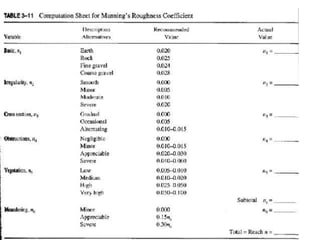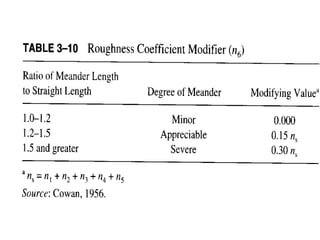Resistance to flow
- 1. Resistance to flow Jyoti Khatiwada Roll no 10
- 6. Effect of fluid viscosity • The viscosity of a fluid is a measure of its resistance to gradual deformation by shear stress or tensile stress.For liquids, it corresponds to the informal concept of "thickness"; for example, honey has a much higher viscosity than water. • Viscosity is a property arising from collisions between neighboring particles in a fluid that are moving at different velocities. When the fluid is forced through a tube, the particles which compose the fluid generally move more quickly near the tube's axis and more slowly near its walls; therefore some stress (such as a pressure difference between the two ends of the tube) is needed to overcome the friction between particle layers to keep the fluid moving. For a given velocity pattern, the stress required is proportional to the fluid's viscosity. • A fluid that has no resistance to shear stress is known as an ideal or inviscid fluid. Zero viscosity is observed only at very low temperatures in superfluids. Otherwise, all fluids have positive viscosity, and are technically said to be viscous or viscid. In common parlance, however, a liquid is said to be viscous if its viscosity is substantially greater than that of water, and may be described as mobile if the viscosity is noticeably less than water. A fluid with a relatively high viscosity, such as pitch, may appear to be a solid.
- 10. • laminar flow occurs at low Reynolds numbers, where viscous forces are dominant, and is characterized by smooth, constant fluid motion; • turbulent flow occurs at high Reynolds numbers and is dominated by inertial forces, which tend to produce chaotic eddies, vortices and other flow instabilities. • In practice, matching the Reynolds number is not on its own sufficient to guarantee similitude. Fluid flow is generally chaotic, and very small changes to shape and surface roughness can result in very different flows.
- 11. Drag coefficient The drag coefficient express the drag of an object in a moving fluid.
- 12. Effect of gravity: froude number
- 14. Chezy equation
- 16. Manning equation
- 18. Darcy weisbach equation • In fluid dynamics, the Darcy–Weisbach equation is a phenomenological equation, which relates the head loss, or pressure loss, due to friction along a given length of pipe to the average velocity of the fluid flow for an incompressible fluid. Theequation is named after Henry Darcy and Julius Weisbach
- 22. Hydraulic flow resistant factors • There are two types of hydraulic resistance: friction resistance and local resistance. In the former case hydraulic resistance is due to momentum transfer to the solid walls. In the latter case the resistance is caused by dissipation of mechanical energy when the configuration or the direction of flow is sharply changed, by the formation of vortices and secondary flows as a result of the flow breaking away, by the centrifugal forces, etc. To categorize local resistances, we usually refer the resistances of adapters, nozzles, extension pieces, diaphragms, pipeline accessories, swivel knees, pipe entrances, etc.
- 24. Cowan’s method of estimating roughness • The most important factors that affect the selection of channel n values are: • 1. the type and size of the materials that compose the bed and banks of the channel • 2. the shape of the channel. • Cowan (1956) developed a procedure for estimating the effects of these factors to determine the value of n for a channel. The value of n may be computed by • n=(nb +n1 +n2 +n3 +n4)m • where : nb =a base value of n for a straight, uniform, smooth channel in natural materials • n1 =a correction factor for the effect of surface irregularities • n2 = a value for variations in shape and size of the channel cross section, • n3 =a value for obstructions • n4 =a value for vegetation and flow conditions • m=a correction factor for meandering of the channel






























